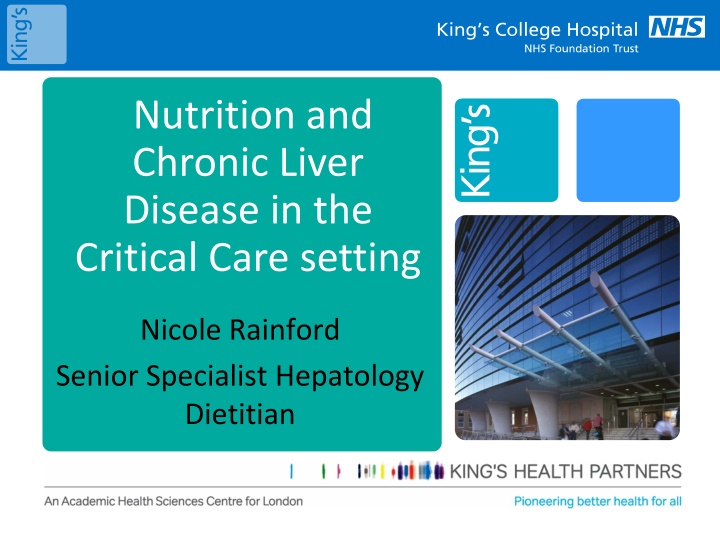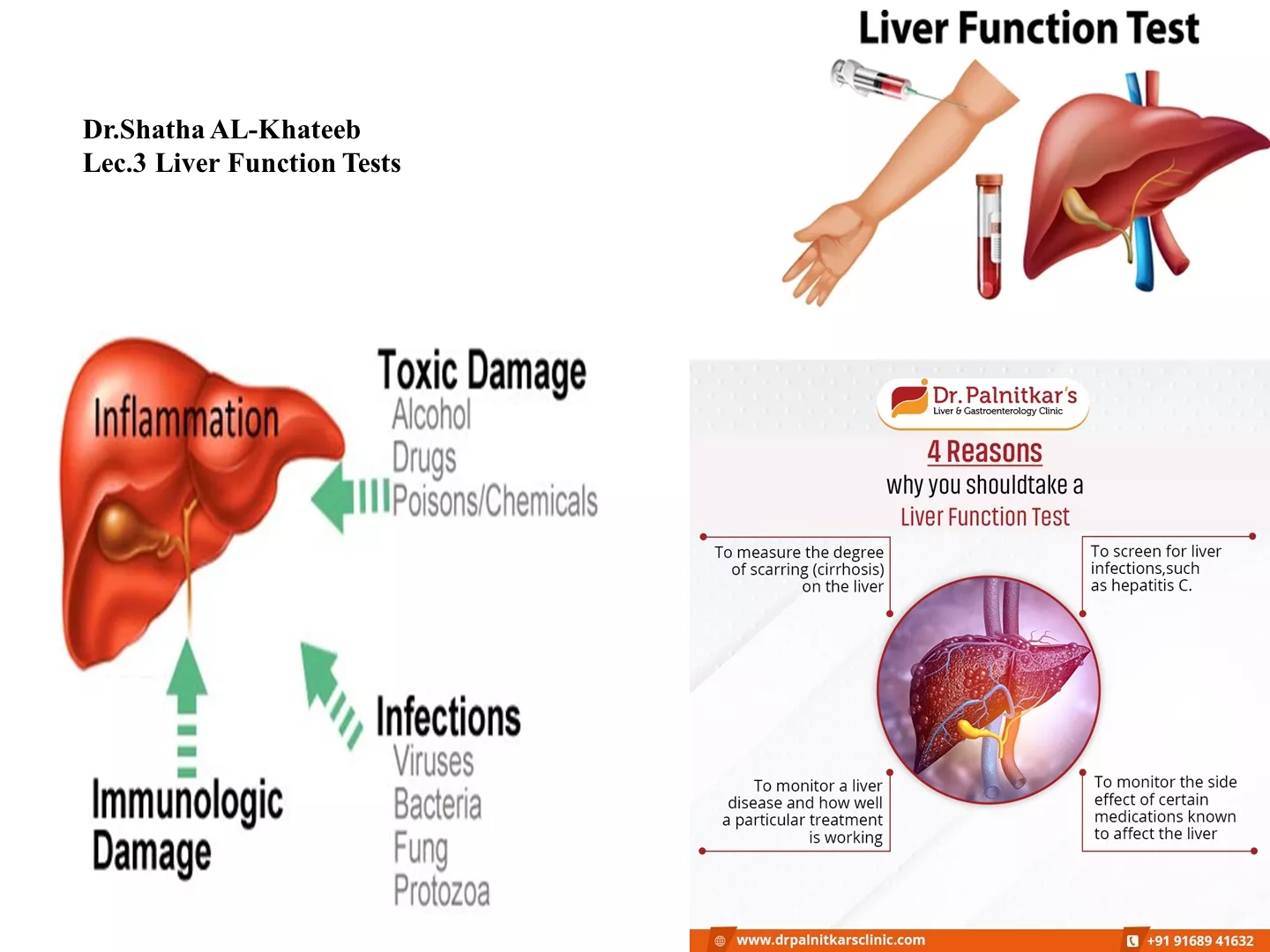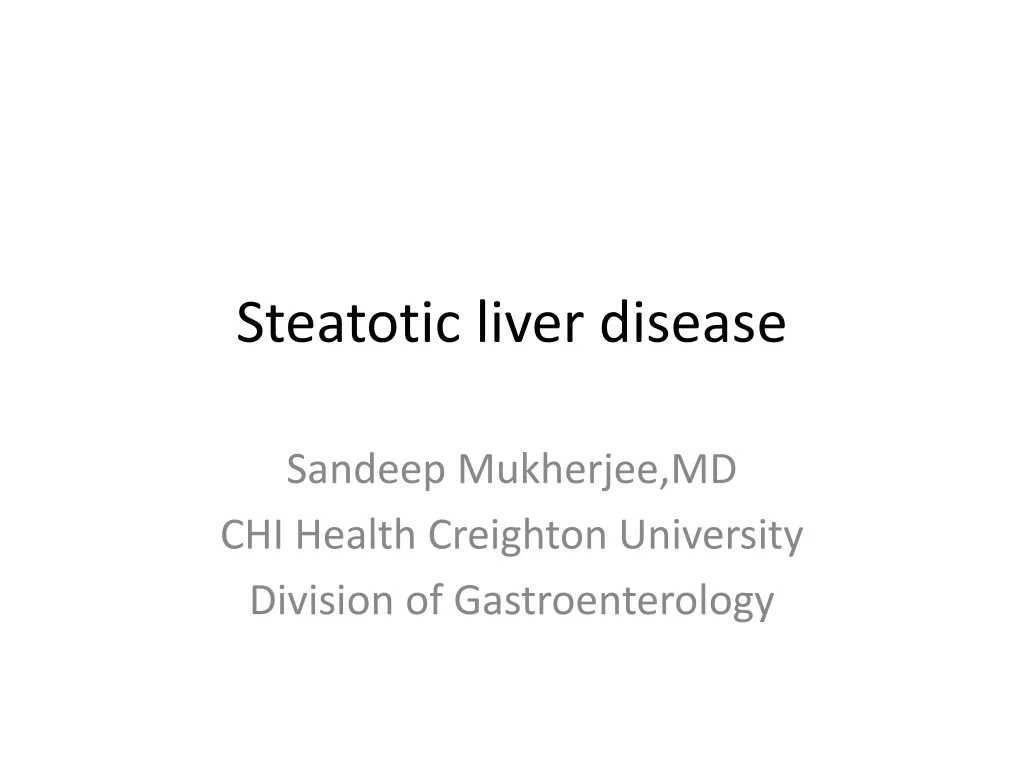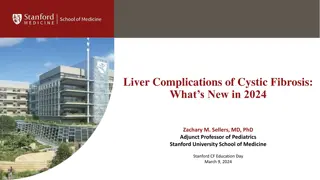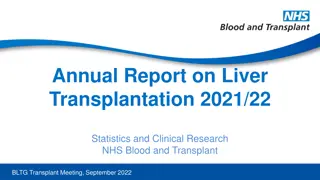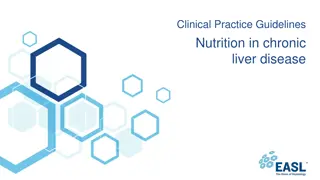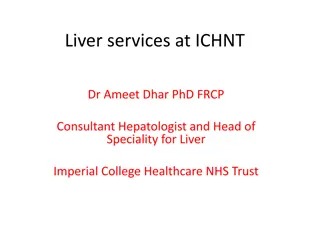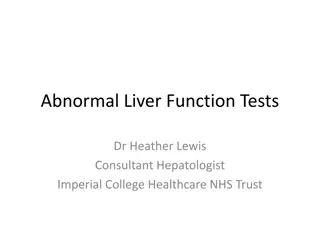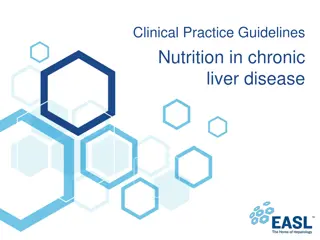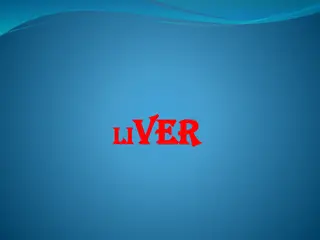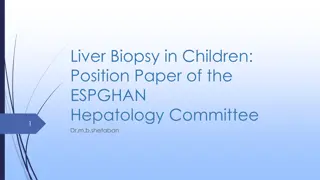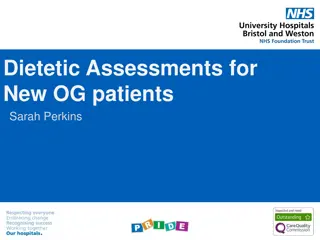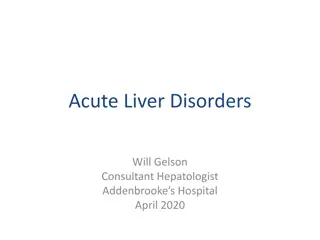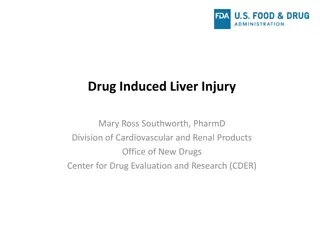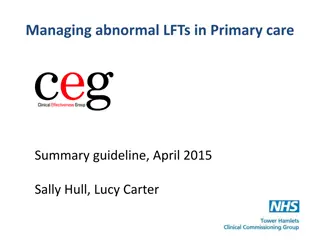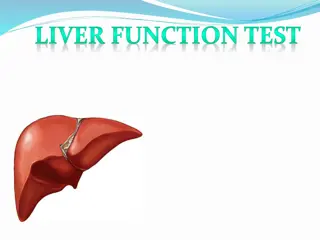Nutritional Considerations for Chronic Liver Disease in Critical Care
Malnutrition is common in chronic liver disease, leading to complications such as ascites and infections. Sarcopenia and weight loss are prevalent regardless of BMI. Critical care patients with liver disease face challenges due to limited physiological reserve, with main causes for ICU admission being hepatic encephalopathy and respiratory failure. Assessment of weight in these patients is tricky due to fluid retention. Providing adequate nutrition in critical care settings can improve outcomes and reduce mortality.
Download Presentation

Please find below an Image/Link to download the presentation.
The content on the website is provided AS IS for your information and personal use only. It may not be sold, licensed, or shared on other websites without obtaining consent from the author.If you encounter any issues during the download, it is possible that the publisher has removed the file from their server.
You are allowed to download the files provided on this website for personal or commercial use, subject to the condition that they are used lawfully. All files are the property of their respective owners.
The content on the website is provided AS IS for your information and personal use only. It may not be sold, licensed, or shared on other websites without obtaining consent from the author.
E N D
Presentation Transcript
Nutrition and Chronic Liver Disease in the Critical Care setting Nicole Rainford Senior Specialist Hepatology Dietitian
What we will be covering today Malnutrition in liver disease Sarcopenia and weight loss Feeding in the critical care Nutritional requirements in liver disease Pancreatitis and malabsorption NJ feeding and PN
Malnutrition in chronic liver disease Malnutrition is one of the most common complications of liver disease is prevalent in even early stages up to 46% of Childs Pugh A increasing to 95% of Childs Pugh C. (Cheung et al, 2012) Malnutrition leads to increased complications ascites, hepatorenal syndrome, HE, variceal bleeding and infections (Thandassery and Mantano-Loza, 2016) Peng et al (2007) found significant protein depletion in 51% of population but there were marked differences between men and women 28% for women and 63% of men Sarcopenia is present regardless of BMI Increasing rates of sarcopenic obesity (Montano-Loza 2014) Ascites is much more common in protein depleted patients 47% vs 22% Malnutrition is an independent risk factor for mortality - length of survival 65% of that of non-sarcopenic patients Hypermetabolism seen in up to 38% of STABLE cirrhotics and REE up to 30% higher than expected (Muller, 1999)
Sarcopenia and weight loss is multifactorial Adapted from Kim and Yang (2015)
The liver disease patient on ITU Patients with end stage liver disease requiring critical care admission with have limited physiological reserve Some of the main causes for admission to ITU include hepatic encephalopathy, GI bleeding, sepsis/infection and respiratory failure Increasing numbers of organ support reduces likelihood of survival though most will have multiple organ failures ITU stays can be long sometimes in the order of months so need to consider longer term consequences
Assessment of liver patient Weight is difficult to assess due to fluid retention Volume of ascites can exceed 20kg Mid Arm Circumfrence can help assess and monitor weight (though oedema is not uncommon)
Feeding in critical care Barr et al (2004) Meeting nutritional requirements associated with lower mortality and increased ventilator free days Khalid et al (2010) Early enteral nutrition in haemodynamically unstable patients showed reduced mortality with the sickest patients conferring the largest benefits ESPEN Critically ill patients with a chronic catabolic disease should be fed to meet full requirements, supplementary PN should be used if needed Much focus on early nutrition and its influence on mortality and LOS in ITU and hospital One of the major drawbacks of much nutritional research in the critical care is that it treats all patients the same and does not tend to stratify in terms of nutritional risk.
Hepatology patients make up a tiny proportion of patients examined EPaNIC trial
Or are excluded altogether TICACOS trial: The main exclusion criteria were requirement for inspired oxygen content (FiO2) greater than 0.6, air leaks through chest drains, inhaled nitric oxide therapy and continuous renal replacement therapy (CRRT), and pregnancy. In addition, patients suffering from significant head trauma (GCS\8), severe liver disease (Child Pugh score C), or after open-heart surgery were also excluded because the length of stay is frequently related to the underlying condition.
Calculating nutritional requirements in liver Aim to start feeding on admission and meet requirements within 48 hours slower if high refeeding risk Ensuring Pabrinex is given before feeding commenced Penn State or 25kcal/kg in intubated and ventilated patients taking into account propofol and IV glucose calories More aggressive nutritional support when patient no longer on full ventilation Aim minimum 1.2g-1.5g protein/kg If on CRRT 1.7g/kg increasing unto 2.5g/kg if possible according to tolerance - Sheinkenstal et al found that positive nitrogen balance was only achieved at protein intakes above 2g/kg, for every 1g increase in protein there was a 21% increase in survival Consideration of Additrace for zinc deficiency and Vitamin D supplementation
Indirect calorimetry Measures resting energy expenditure Possibly very helpful in liver diease Patient 18 years male, liver failure due to Wilsons, ventilated EER was 1832kcal 35kcal/kg vs standard ITU requirements which would be around 1250.
NJ tube insertion and PN NJ tube insertion should be considered in those with high residual gastric volumes despite pro-kinetics, persistent vomiting, pancreatitis Bedside insertion of NJ tubes reduce patient waiting times for tube insertion PN should be considered in those where enteral feeding cannot be established or in those who can only tolerate small volumes of enteral nutrition Liver failure is not an automatic contraindication for PN Can be especially helpful in particularly malnourished patients
Pancreatitis and Cholestasis Pancreatitis is a common finding in alcohol related liver disease and should be considered in all those presenting with alcohol related liver disease In patients with diarrhoea or signs of fat malabsorption or a calcified pancreas pancreatic insufficiency should be considered Semi-elemental formulas should be used with pancreatic enzymes Pancrex V 1g every 2-4 hours or Creon 25,000 unit tablets every 4 hours be aware of volume of sodium bicarbonate Bilirubin > 300 consider lower fat feeds these tend to be semi- elemental If eating fat to tolerance
Summary of recommendations Aim to start enteral feeding within 24-48 hours or admission Use of feeding protocols and pro-kinetics Ensure refeeding medications are given in those at risk Low threshold for NJ insertion/PN Trial of pancreatic enzymes and semi-elemental formulas in cases of suspected malabsorption Monitor, monitor, monitor - patients are evolving continuously
References Cheung, K., Lee, S., Raman, M. Prevalence and Mechanisms of Malnutrition in Patients With Advanced Liver Disease, and Nutrition Management. Clinical gastroenterology and hepatology; 2012;10:117 125 Kim, H., Yang, J. Sarcopenia in the prognosis of cirrhosis: Going beyond the MELD score. World Journal of Gastroenterology; 201521(25): 7637 7647. Montano-Loza, A. Clinical relevance of sarcopenia in patients with cirrhosis. World Journal of Gastroenterology; 2014 Jul 7; 20(25): 8061 8071. Thandassery, R.B. & Montano-Loza, A.J. Curr Treat Options Gastro; 2016;14: 257-273
